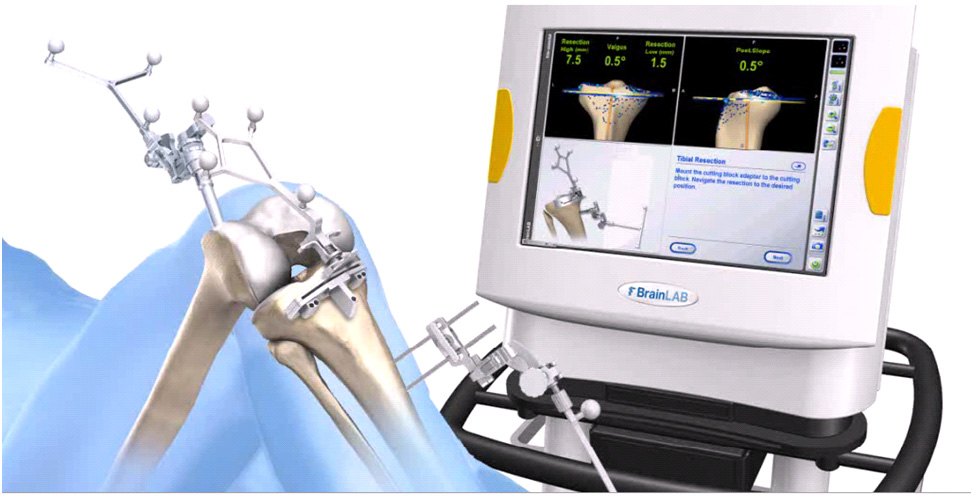Computer navigated knee replacement
Total knee replacement (TKR) surgery has become a commonly performed and highly successful surgical procedure. Recent innovations have improved both early and long term results. New implant designs have provided for greater and more normal range of motion. Better understanding of the role of the ligaments about the knee has resulted in improved joint stability.
Computer navigation guiding the surgeon through the implantation of a total knee replacement is the newest and perhaps most exciting innovation. Through infrared sensing of patient anatomy the computer can precisely advise the surgeon as to the exact location new knee implants should be positioned. This technology carries the promise of improving the precision of total knee replacement surgery, thus, improving the short and long term performance of the knee replacement.

The surgical technique of computer navigation starts with the use of an infrared sensor marking and mapping the anatomy of the arthritic knee and adjacent bony structures (the femur and tibia). Through the use of sophisticated software the computer is able to ascertain the position of the knee in space and detect and quantify any deformities or bone loss. It then, with input from the surgeon, can determine what changes need be made via bone cuts and ligament balancing so as to position the new artificial knee in the proper anatomic alignment.
The computer gathers a three dimensional image of the anatomy of the knee preoperatively and the intended anatomy of the knee at the completion of surgery.
